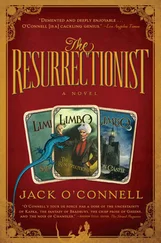Basically, Sylvia bided time, lived like a phantom, made few friends, and spent virtually all of her free hours either watching movies or shooting film in the little nearby farming towns, then developing prints in the school darkrooms.
That’s what she remembers about the years she came of age — focusing a lens at a rusted tractor, a grade school playground, a row of icicles under a railroad bridge. And hours alone in narrow, windowless, closetlike rooms, breathing chemical-thick air and straining her eyes in deep red light.
They’re standing in a circle next to the bar which has been set up in a small room off the main gallery. Actually, it’s not a room at all, but, as the plaque on one of the walls points out, it’s a
Chapter House
French, 1160–1175
Painstakingly reconstructed and
originally part of the Benedictine
Priory of St. John, at Le Bas Nueil,
a hamlet north of Poitiers in
West Central France.
It’s a stark, low, dome-ceilinged, chapel-like cove of a room that makes Sylvia feel they should all be praying instead of making insipid small talk. And though she doesn’t like how severe and cold the surroundings are, she can’t take her eyes off the sculpture in the corner. She leans away from Perry and squints at the info-plaque next to the artwork.
Virgin & Child
French, Late 14th century
Limestone
By arranging the Virgin with her weight resting on one foot, the sculptor gives the figure a gently swaying motion. The serenity of the Virgin’s face conveys the awe and majesty that early Gothic artists sought in their images of divine personages. Combined with this ideal quality is a certain amount of naturalism which points forward to the realism of the late Gothic style. The realism is further evident in the child with his grinning, mischievous expression and peasantlike features.
She reaches up to touch the Virgin’s face, feels how cold the stone is. And she hears, “Sylvia and I were just discussing this last night, right dear?”
It’s Perry’s voice and Sylvia tunes in to see the whole circle suddenly focusing on her. And she has no idea what they’ve been talking about.
“That’s right,” she manages.
Last night. Last night I was riding Perry in the last row of the Cansino Drive-In. And there’s a part of her that wants to blurt this out.
“Well, I have to say, this surprises me.”
It’s Ratzinger, the closest thing Perry has to a boss and a guy who will spend his life anguishing over the fact that his father’s bloodline will always keep him from being pure WASP. Ratzinger’s closing in on his fifties, but tries to dress himself ten years younger. Perry’s told Sylvia all about the twenty-year-old the man keeps in a high-rise condo down by the reservoir, a quick fifteen miles from the Windsor Hills wife and therapy-addicted son, Sylvia thinks Ratzinger colors his hair.
She tries to fake understanding. “Surprises you?” she says, smiling.
He gestures to her with his champagne flute. “Yes. You being a photographer and all. And by now I think all of us have been beaten into accepting photography as a legitimate art form.”
Perry gives her hand a please don’t squeeze.
Sylvia can’t help it. “I’m not a photographer,” she says.
“But I thought—” he begins.
And Sylvia opens her mouth to cut him off with something about his need to understand what a beating is, but Candice, a blonde from Perry’s department, gets there first and says, “C’mon, Earl, please, just admit that it isn’t an aesthetic argument. This is power politics at its most anal. You’ll push the mayor and Welby will push back and you’ll measure each other’s column inches in the Spy.”
Ratzinger turns full attention to Candice, surprised but clearly impressed by the show of what he calls office balls.
“Did you see the Mapplethorpe exhibit when it passed through town, Candice? Did you come down here and take a look?”
But Candice stays loose and friendly. “I did, Earl. But my judgments about the exhibit have nothing to do with what’s really going on here. The old boys—”
“Watch it,” Ratzinger says, smiling through a squint.
“The senior partners,” Candice continues, shaking her head slightly, “couldn’t care less about obscenity or the First Amendment or the moral disintegration of America. You know this better than I do. Every one of us here knows this. The senior partners’ big hope is that they can cash a new check before their pacemakers shut down. FUD’s money is as green as anyone else’s. That’s the issue. That’s why we’ve got a fat new cow to milk.”
“Candice,” Gordon scolds, but Ratzinger is amused and nodding like he agrees with the woman’s pronouncement.
“Well let’s try it this way,” he says. “Let’s say you’re one of the old boys. You haven’t had a thing to do with the real work in ten years. Your big job is P.R. and an eye on the bottom line every month. You’re a figurehead who’s steered Walpole & Lewis through enough miles to think you deserve all your last years at the widest part of the trough. Okay, Candy? Can you hold that picture? Now, your favorite congressman calls up one day and says he can put something sweet in your lap. Something that will really send you out in style. Okay? So you go up to the top of the bank building and you eat some red meat with the congressman’s new friends. And after the chocolate mousse is resting in your belly, the FUD boys offer to write a check. Pay to the order of W & L. Ready for deposit in the corporate account. And that check is going to change all the numbers next quarter. It’s going to trickle down to the maintenance crew, for Christ sake. And all you’ve got to do is slap your best people on their team and say a few Amens for the cause. What decision does Candice make? I want to hear.”
They’ve both kept the argument civil. They’ve both showed how smooth they can play conflict without rolling over. They’ve sounded intelligent and savvy at the same time. Informed but colloquial and always sure of themselves. Sylvia wonders how people end up this way.
“What do I do?” Candice says. “I endorse the check and say Praise the Lord to the comptroller. Every one of us would do what the old boys did. That wasn’t my point, Earl, and you know it. I’m saying let’s admit we’re hypocrites—”
“Pragmatists,” Perry says and Sylvia sees Ratzinger nod to him.
“Whatever,” Candice says, now looking at Perry. “We’ve cashed their check. So we’re in bed with the Families United for Decency. But that doesn’t mean we’re married to them. Does it, Earl?”
She scores with a not-so-subtle shot about the mistress. Sylvia would call it suicide, but Candice is a smart woman and she must know Ratzinger gets off on the clash, gets some juice from a little rough sparring.
Ratzinger raises his champagne toward Candice, lowers his voice and says, “A First Amendment fetish.” He gives a put-on, too-loud sigh and adds, “I guess some of us will never get over our years at Berkeley.”
Sylvia would give a night in the darkroom to hear Candice’s comeback, but the gallery fills with that awful microphone whine and everyone turns to see this crew-cut, squinty-eyed guy in a tux craning his neck and looking impatient behind a heavy wooden lectern. He’s positioned in front of a massive medieval tapestry that hangs from an upper balcony. The tapestry depicts what might be a Grail scene, some crude-looking knights and horses about to enter a dense forest.
“Ladies and Gentlemen,” the guy says, “If I might have your attention.”
The crowd converges and forms into a loose semicircle and gradually voices start to lower.
Читать дальше











